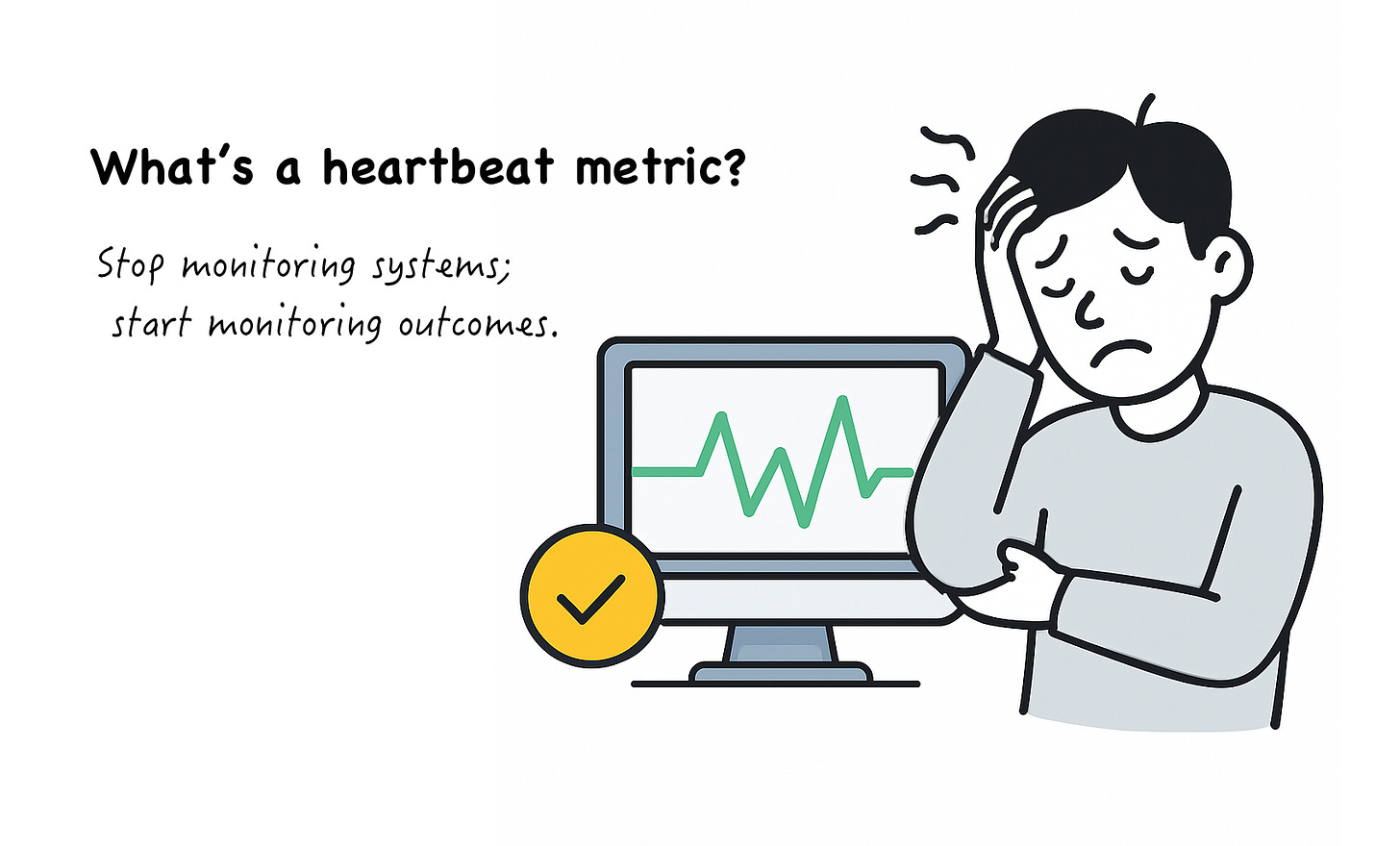The Only Metric That Matters When Everything Else Goes to Hell
A quick guide to heartbeat metrics (and why your dashboards won’t save you)
👋 Ciao, Alex here. Welcome to a new free edition of Not Just Bits. Thank you to all the readers and supporters of my work! Every month, I aim to share lightweight and informative resources for CTOs.
I’ve been in the room when the site was technically “fine,” but the business was bleeding.
Everything green. Everything calm. Everything quietly broken.
The team was staring at uptime graphs like they might confess to something.
They didn’t.
Meanwhile, users couldn’t check out. Or upload. Or click the thing that was supposed to lead to the other thing.
This is why you need a heartbeat metric.
What’s a heartbeat metric?
It’s the one signal that tells you: "People are doing what they came here to do."
Not “servers are responding.” Not “logins are high.” Not “our NPS hasn’t cratered yet.”
A heartbeat metric tells you the product is actually working—in the way that matters.
It’s not fancy. It’s not exciting.
But when all hell breaks loose, it’s the number that tells you if you’re still alive.
Real examples (not theory):
E-comm? Successful checkouts per minute.
SaaS? Users completing a core task.
Dev tool? Builds triggered and completed.
Marketplace? Orders placed that didn’t bounce.
Don’t overthink it. Pick the one thing that, if it flatlined, you'd hear about it in under ten minutes—because customers would be gone or yelling.
What makes it a good heartbeat?
It’s user-facing. Not backend ops.
It breaks when value breaks. Not when a server burps.
It’s steady. No big spikes. No vanity. Just pulse.
It’s uncomfortable. It’ll show failure faster than you’d like.
You can’t hide behind it. That’s the point.
Why teams ignore this
Because uptime is easier.
Because dashboards look good in screenshots.
Because tracking actual outcomes means admitting where things aren’t working.
Heartbeat metrics don’t flatter you.
They keep you honest.
One metric, not fifty
Some teams try to build a whole hospital monitor setup—ten dashboards, twenty alerts, custom animations.
That’s noise.
Start with one metric that cuts through the nonsense.
The one that forces someone to say:
“If this is down, I don’t care what the infra metrics say—we have a real problem.”
You can layer on later. But start there.
Closing thought (and minor plea)
If you don’t know your heartbeat metric, figure it out now—before you’re in crisis mode.
Because when the app slows down, users rage-click, and your team’s on its fifth debugging Zoom of the day, your beautiful observability stack won’t tell you the one thing you actually need to know:
Are people still getting what they came for?
If not, nothing else matters.
✅ Before you go:
Please share this post and invite your network to subscribe to the Not Just Bits newsletter.
Feel free to connect with me on LinkedIn.
See you next month! Best, Alex Di Mango


